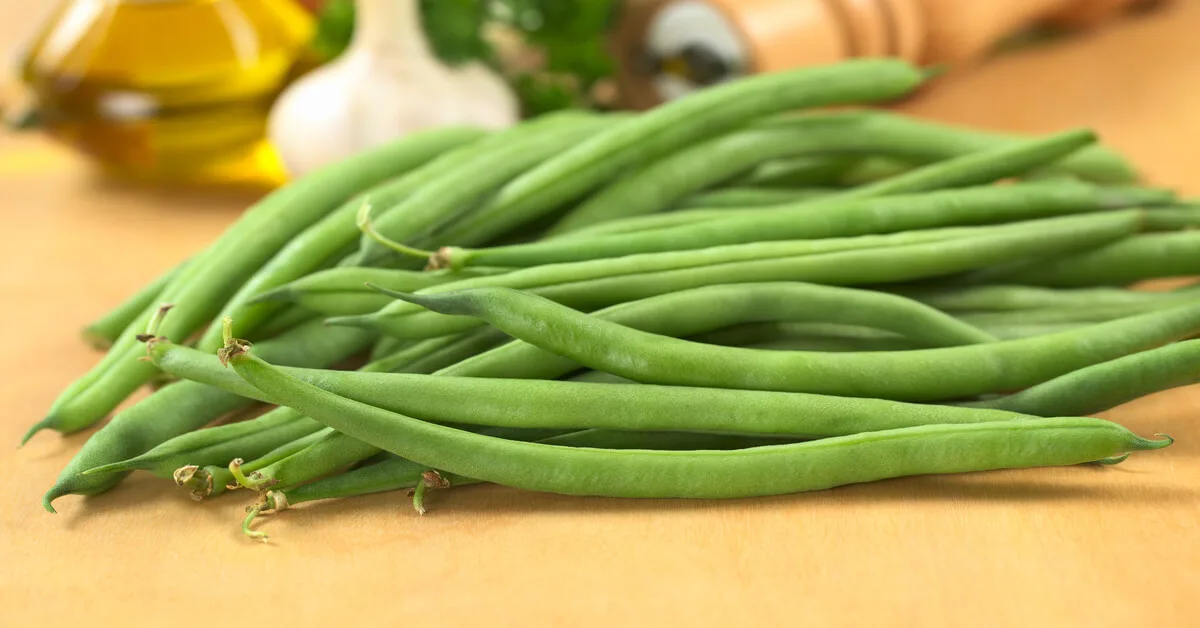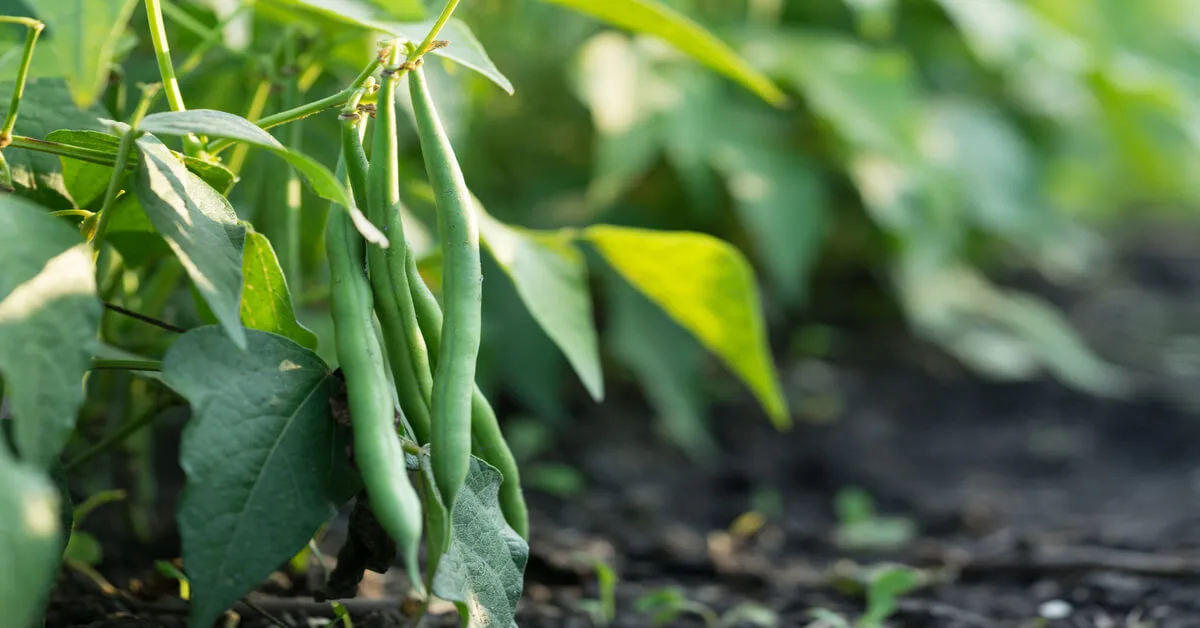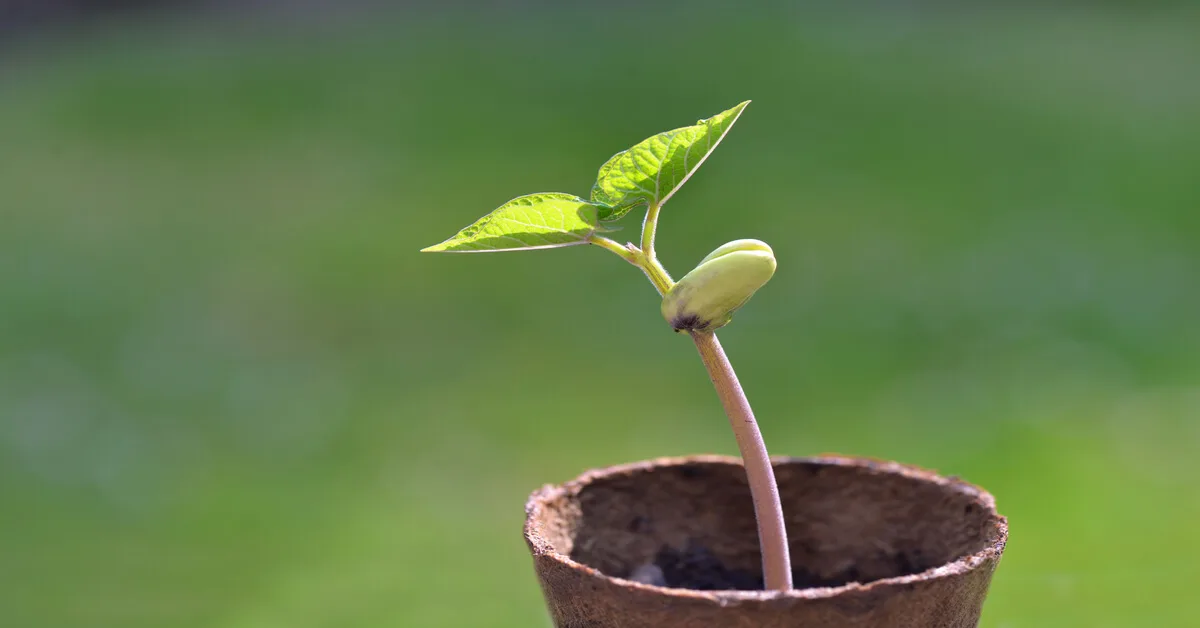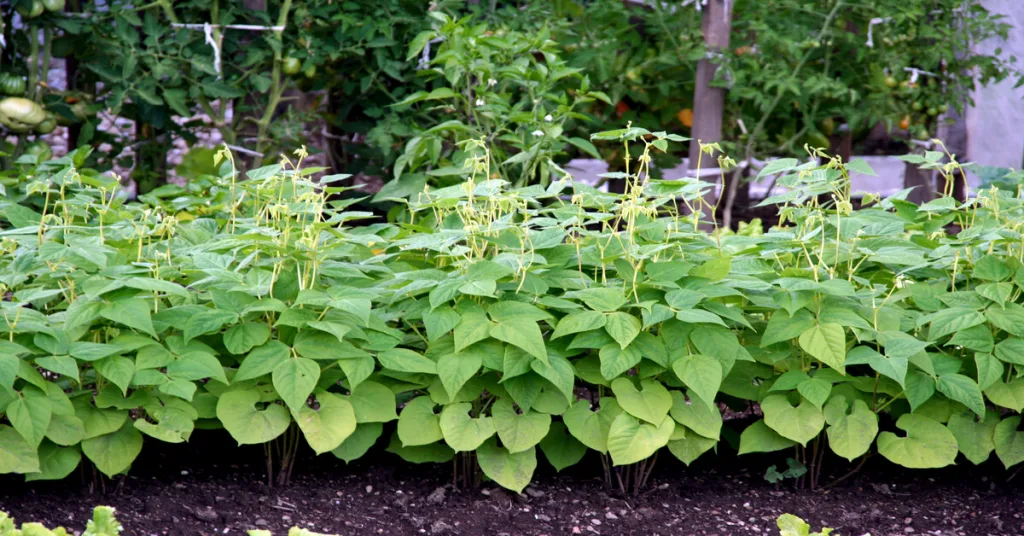Some of the links in this post are affiliate links. This means if you click on the link and purchase the item, I will receive an affiliate commission at no extra cost to you.
There are several varieties of the common bean (Phaseolus vulgaris) including green beans, black beans, navy beans, kidney beans, Northern beans, wax beans, and pinto beans. They have compound leaves with three leaflets per leaf. Growing green beans is popular in backyard gardens and can be done easily with bush and pole-type plants.
Common beans either grow as a bush or a climbing vine known as ‘pole-type’ depending on the variety. Bush beans are easier to maintain due to their compact growth form but typically produce fewer beans. Pole beans tend to be more disease resistant but require some sort of trellis to grow on.
In this article, we will discuss everything you need to know about growing green beans with pole or bush-type varieties.
Bean Plant Care
Green beans, also known as string beans and snap beans, are rather easy to grow provided you have a sunny location to plant them and provide moderate soil moisture. However, there are a handful of pests and diseases to watch out for depending on the variety you grow. Below are all of the things you need to provide for optimal green bean growth.
Soil
Common beans grow best in loose, well-draining soil. Soil should have a slightly acidic to neutral pH (6.0 to 7.0). Adding a thin layer of mulch on top of the soil will help with water retention and keep the soil cooler for the shallow root system of bean plants.
Watering
Beans need about 1 inch of water per week. Depending on the weather and temperature, you should water your beans about twice a week or every three days. Dry spells will negatively impact pod development but overwatering can lead to root rot issues.
Lighting
Bean plants need full sun which means 8 to 10 hours of sunlight per day. Less sunlight will decrease the number of beans the plant produces.
Humidity & Temperature
Temperatures between 65 and 85 degrees Fahrenheit are best for growth. Humidity levels typically don’t impact outdoor bean growth except that high humidity can increase disease issues.
Fertilizing
It is best to test your soil to determine how much fertilizer it needs and to add fertilizer before planting your beans. Alternatively, you can purchase pre-mixed soil that tells you how much fertilizer it contains. Too much fertilizer can lead to an abundance of leaf growth and reduced bean yields.
Diseases & Pests
Pests that attack bean plants include aphids, cucumber beetles, cutworms, flea beetles, Japanese beetles, leafhoppers, Mexican bean beetles, mites, nematodes, slugs, stink bugs, and whiteflies. Diseases that impact bean plants include anthracnose, bean mosaic virus, powdery mildew, and white mold. Try to select disease-resistant varieties to avoid disease issues.
Days To Maturity
The number of days to maturity depends on the variety of green beans you grow. Pole beans put out new pods continually as they grow and the first beans are ready for harvest in 55 to 65 days. Bush beans all mature simultaneously and are usually ready to harvest in 50 to 55 days.
Harvesting

Since green beans are a type of snap bean, they are harvested while they are unripe and tender. They should be firm and their stem should easily snap when they are ready. They will usually be the thickness of a pencil at harvest time.
If you can see the seeds bulging through the pods, they have overripened and the pods will be tough if eaten. Pods harvested early in the morning will have the highest sugar content and taste best. With pole varieties, you should harvest pods daily or at least every other day to encourage more pods to grow.
The harvested pods should be stored in the fridge for up to 4 days. After 4 days, the pods may be too tough to be eaten. You can blanch and freeze them for later use. String beans are also great for canning and pickling so that you can enjoy them throughout the year.
Bean Plant Growth Stages

Emergence (0-10 days): After planting your seeds, germination will occur within 10 days and you’ll see the plants begin to emerge from the soil.
Vegetative Growth Stages (10-30 days): Once the trifoliate leaves begin to emerge, vegetative stages are described based on the number of leaves that have emerged. There are typically 8 vegetative growth stages known as V1 through V8.
Bud Stage (30-40+ days): Flower buds begin to form at leaf axils. Buds will form on bush-type plants for about 10 days while buds will continuously form on pole-types as the vine grows longer.
Flowering Stage (40+ days): The flowering stage begins when the first flower opens and continues until all the flowers have dropped. Flowers will begin to open on bush-type plants around day 50 and continue for about a week. Pole-type plant flowers start opening around day 40 and will continue as the vine grows.
Fruiting and Ripening Stage (43+ days): This stage begins when the first pods begin to form from the flowers. Pods begin to form 3 to 4 days after the first flower opens. Ripening of pods can take 1 to 2 weeks depending on the variety.
Harvesting Stage (50+ days): The harvesting stage begins on pole-type green beans when the first bean is ready for harvest and lasts for up to two months. Bush-type varieties will all be ready to harvest within a few days of each other.
When & How To Grow Beans
Both bush and pole-type green beans should be planted after the last frost date in your area and when soils have reached at least 48 degrees Fahrenheit. This typically occurs between March and June depending on where you live. Seeds of either type should be planted 1 inch deep in the soil.
Spacing For Bush Beans
All of the pods on bush-type green bean plants mature at once. If you want to have fresh green beans throughout the season, sow seeds every two weeks instead of all at once. Bush green bean seeds should be planted 2 to 3 inches apart and rows should be placed 18 to 24 inches apart.
Spacing For Pole Beans
If you are growing pole beans, make sure to set up your trellis or support stakes before planting to avoid disturbing the root system after growth begins. Seeds should be planted 4 to 6 inches apart. If you plant multiple rows, leave at least 30 to 36 inches between rows.
After planting seeds, follow the care guidelines outlined above.
Growing Green Beans In Containers

Green beans do well when grown in containers provided you use the right type. Containers should have plenty of drainage holes and be at least 9 inches deep. The diameter of the container should be at least 15 inches for bush types and 18 inches for pole types.
Follow the same spacing and care guidelines outlined above when using containers. To maximize space, you can use rectangular containers that are at least 8 inches wide.
Types (Varieties) of Green Bean Plants
There are more than 130 varieties of green beans. They can either be bush or pole beans and come in a variety of shapes, sizes, and colors. Below is a table with a few common varieties you can grow in your garden.
| Variety | Growth Type | Bean Type | Days to Maturity |
| Greencrop | bush | green romano | 53 |
| Gold Marie | pole | yellow romano | 75 |
| Golden wax improved | bush | yellow/wax pod | 60 |
| Kentucky wonder | pole | green heirloom | 65 |
| Rattlesnake bean | pole | green heirloom with purple streaks | 65 |
| Royal Burgundy | bush | purple pod | 55 |
| Triomphe de Farcy | bush | green heirloom | 45 |
| Trionfo Violetto | pole | purple pod | 60 |
Bush beans vs Pole Beans
The main difference between bush beans and pole beans is their growth habit. Bush-type green beans are shrubs that are compact and grow to about 2 feet tall by 2 feet wide. Pole-type green beans are climbing vines that grow up to 15 feet long and need a trellis or stake to grow on.
There are a few other pros and cons to consider when deciding between growing bush or pole-type beans. Bush-types tend to have more disease issues than pole-types. However, there are varieties of both types that are resistant to certain diseases.
Bush types tend to reach the harvest stage quicker (45 to 60 days) but all of the pods will mature within about 3 days. This may be preferable if you plan to blanch and freeze, can, or pickle your green beans for later use. If you want to enjoy freshly harvested green beans throughout the growing season, you’ll have to plant bush beans every two weeks at the beginning of the season.
Pole types take a little longer to reach the harvest stage (60 to 75 days) but often produce more green beans per plant. The plants will produce mature beans for 1 to 2 months, so you won’t have to stagger planting. Pole beans also require the use of a trellis or stakes.
References:
Gray, S. (2013). Vegetables: growing green beans in home gardens. Washington University Extension Fact Sheet FS088E.

